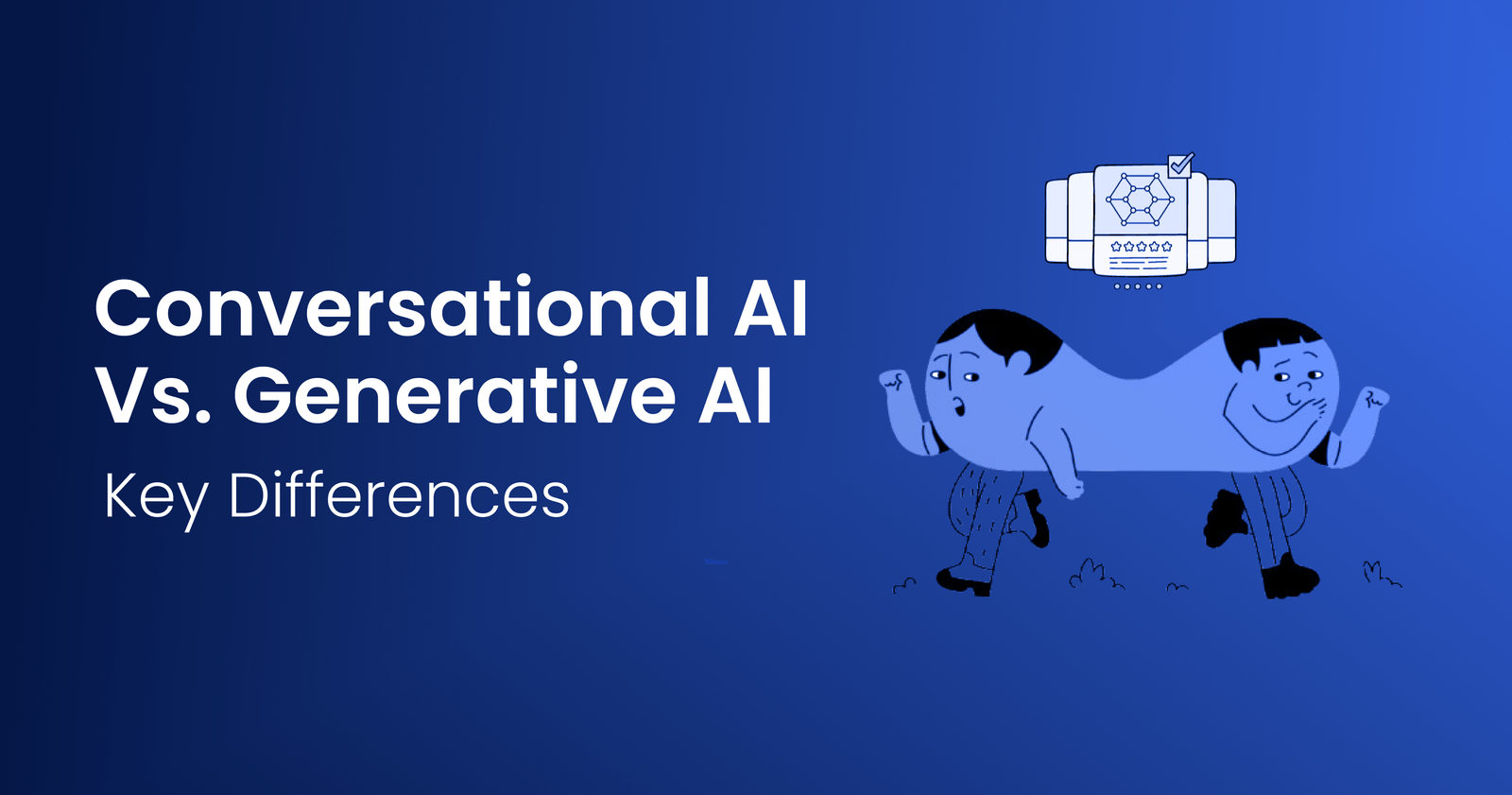Conversational AI vs. Generative AI: What’s the Difference in 2025
The field of artificial intelligence has seen transformative advancements in recent years, with Conversational AI and Generative AI becoming pivotal technologies. While both play crucial roles in modern AI applications, they serve distinct purposes and operate differently. This blog explores their unique characteristics, use cases, and the innovations shaping their evolution in 2025.
What is Conversational AI?
Conversational AI refers to technologies designed to simulate human-like conversations. These systems rely on natural language processing (NLP), machine learning, and speech recognition to understand, process, and respond to user queries.
Key Features of Conversational AI:
- Context Awareness: It maintains the context of a conversation to deliver coherent responses.
- Task-Oriented Focus: Primarily designed to fulfill specific user tasks, such as booking appointments or answering FAQs.
- Interactive Learning: Improves over time through user interactions.
Applications in 2025:
- Customer Support Chatbots: Enhanced automation in resolving customer queries efficiently.
- Virtual Assistants: Personal assistants like Alexa, Siri, and Google Assistant are now smarter and more personalized.
- Healthcare: Appointment scheduling and symptom checkers.
- E-commerce: Guiding customers through shopping experiences.
What is Generative AI?
Generative AI focuses on creating new content—whether text, images, videos, or code—based on input data. It leverages deep learning models like Generative Adversarial Networks (GANs) or transformer-based models like GPT and DALL-E.
Key Features of Generative AI:
- Content Creation: Capable of generating text, artwork, or even realistic videos.
- Problem Solving: Applies creativity to complex challenges, such as generating new product ideas or coding solutions.
- Personalization: Tailors output to user preferences.
Applications in 2025:
- Creative Industries: Content creation for marketing campaigns, video game design, and music composition.
- Healthcare: Synthesizing drug compounds or generating medical reports.
- Education: Automated content creation for e-learning modules.
- Software Development: Generating code snippets or debugging applications.
Key Differences Between Conversational AI and Generative AI
| Aspect | Conversational AI | Generative AI |
| Purpose | Facilitates human-like conversations | Creates original content |
| Core Functionality | NLP, intent recognition, and context management | Deep learning, GANs, and transformer-based models |
| Output | Responses to specific queries | Text, images, videos, or structured data |
| Use Cases | Chatbots, virtual assistants, customer service | Content creation, drug synthesis, personalized apps |
| Complexity | Predefined intent and dialog flow | Creative generation from minimal input |
Innovations in 2025: Bridging the Gap
While Conversational AI and Generative AI remain distinct, advancements in AI are beginning to merge their capabilities. Conversational systems now use generative models to provide richer, more nuanced responses, making interactions more human-like and engaging.
- Example of the Convergence:
A virtual assistant like ChatGPT-powered bots can answer queries while also generating personalized content, such as writing emails or creating summaries.
Challenges and Considerations
- Conversational AI Challenges:
-
-
- Understanding complex queries.
- Maintaining consistent tone and context.
-
- Generative AI Challenges:
-
- Ethical concerns around deep fakes and misuse.
- High computational requirements.
Conclusion: Complementary, Not Competing
Conversational AI and Generative AI are two sides of the same coin, each excelling in their respective domains. While Conversational AI handles interaction, Generative AI drives creation. Together, they form the backbone of many groundbreaking AI applications in 2025, paving the way for an intelligent and creative future.


